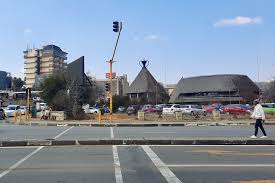Lesotho’s economy is trying to recover after years of challenges, but the progress made this year could be at risk if global and regional economic conditions worsen. This was the key message from the Central Bank of Lesotho (CBL) during its 114th Monetary Policy Committee (MPC) meeting held in Maseru this week. The meeting, chaired by CBL Governor Dr. Maluke Letete, reviewed the current state of the economy, inflation trends, fiscal health, and the risks ahead.
According to Dr. Letete, Lesotho saw modest growth in May 2025, supported mainly by stronger private consumption and a steady manufacturing sector. The textile industry, which is one of the country’s largest employers, played a major role as exports to South Africa increased. However, the governor warned that this momentum is fragile and could easily be slowed down by external shocks. He listed some of the biggest risks, including falling global demand for goods, rising trade costs, and the withdrawal of major donor-funded projects such as Compact II.
Another area of concern is the mining sector, which has been facing persistent operational and investment challenges. Lesotho depends heavily on diamond mining, but fluctuations in global prices and reduced production have limited its contribution to economic growth.
On the positive side, inflation in the country dropped to 4.3 percent in June 2025, thanks to lower global oil prices and a stronger loti currency against the US dollar. The CBL expects inflation to remain under control in the short term, but the country is still vulnerable to price increases from imported goods, especially from South Africa, which supplies much of Lesotho’s consumer products.
Looking at the fiscal position, Dr. Letete reported a government budget deficit of 4.4 percent of Gross Domestic Product (GDP) as of May 2025. Government revenue, excluding receipts from the Southern African Customs Union (SACU), remained steady, while government spending fell mainly because of reduced grants to extra-budgetary institutions and lower capital investment. Public debt also recorded a small drop, now standing at 54.8 percent of GDP.
In the external sector, Lesotho saw some improvement. This was driven by higher textile exports and increased SACU receipts, which boosted the country’s Net International Reserves (NIR) by US$50.95 million, bringing them to US$1.12 billion by July 22, 2025. Maintaining strong reserves is key to protecting the fixed exchange rate peg between the loti and the South African rand.
The CBL’s MPC said keeping this exchange rate stable is central to controlling inflation and ensuring macroeconomic stability. Because of South Africa’s recent decision to cut interest rates and the fact that Lesotho’s domestic inflation is stable, the MPC decided to slightly ease its own monetary policy. The policy rate was reduced from 7 percent to 6.75 percent per year.
At the same time, the NIR target floor was raised from US$830 million to US$840 million, which the CBL believes is enough to protect the currency peg. Dr. Letete stressed that since Lesotho does not have its own independent exchange rate, the country must rely on sound monetary policy and careful reserve management to maintain stability.
The CBL also promised to keep monitoring both domestic and international developments, including inflation trends, fiscal performance, SACU revenue, and South Africa’s economic policies. If any risk threatens the exchange rate peg or domestic price stability, the MPC is ready to take immediate action.
For now, the Central Bank is balancing the need to support economic growth with the need to protect financial stability. While there are signs of progress, the warning from the CBL is clear — without careful management and preparation for external shocks, Lesotho’s economic recovery could easily slow down or even reverse.
